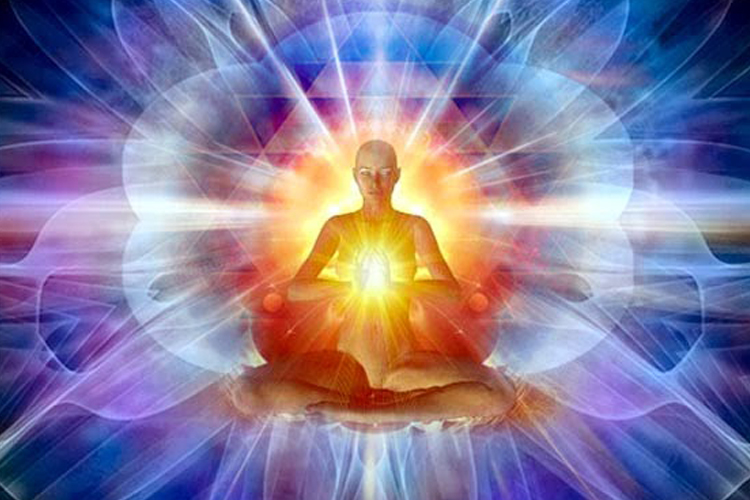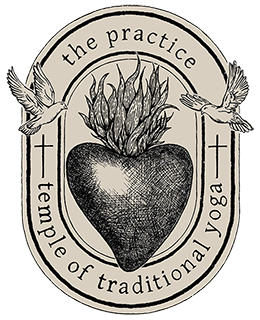by Ami Effendy.
Like the ability to learn a language or love another human being, the ability to feel joy is something we are all born with. We are born happy; we are born free.
However the human being has to face the facet of changes, our conditioning. Everything is changing, the season is changing, the day is changing, and our body is changing. More importantly our mind is also always changing, our mood is changing, and the world is changing. All that changes creates a certain level of uncertainty, in deeper level even fear. The other change that we rather think about is mortality.
Many of us still believe that joy isn’t innate – that is only comes with possessing a specific item or achieving a particular outcome. So we keep searching for joy through objects, relationship, and experiences, which prevents us from realizing that this essential emotion is already within us, patiently waiting to be experienced.
Unfortunately, when you resist or deny feelings of joy, your life and relationships can lose their meaning and value. For instance, when you feel you’re not living life fully, or when you’re feeling bitter or jealous about that which others have and you don’t, these feelings can overshadow your ability to feel your innate joy.
Research shows that regularly experiencing joy—whether in the form of laughter or of activities that promote happiness and well-being, can produce healthy changes throughout your body. Joy can strengthen your immune system, boost your energy, diminish your perception of pain, anxiety, and depression, protect you from the damaging effects of stress, increase your ability to sleep restfully through the night, and more. And the best thing is that you can access feelings of joy at any time through meditation.
Another practices for welcoming joy is to spend time experiencing gratitude moments—welcoming feelings of gratitude and joy into body and mind. You do this by taking time to recall that which you’re thankful for. Research shows that people who regularly practice gratitude moments are more joyful and experience less depression than those who don’t.

Heart – Brain Connection According to Science
Many believe that conscious awareness originates in the brain alone. Recent scientific research suggests that consciousness actually emerges from the brain and body acting together. A growing body of evidence suggests that the heart plays a particularly significant role in this process.
The human heart has always been a symbol love and romance. In reality, however, it is an organ that pumps blood around our bodies, or there is something more?
Where has this emotional connection to love come from?
No other organ in the human body has this connection with an emotion, so could there be something behind the literature and poetry, and if so, could science provide an explanation?
There are neurons in your heart.
Many people assume that the brain is controlling our emotions, but Professor David Paterson, Ph.D. at Oxford University, disputes this. He says that the brain is not the only organ that produces emotions. This is because the heart actually contains neurons similar to those in the brain, and these fire in conjunction with the brain. The heart and the brain are therefore connected:
When your heart receives signals from the brain via the sympathetic nerves, it pumps faster. And when it receives signals through the parasympathetic nerves, it slows down, says Professor Paterson.
In 1991, a scientific discovery published in the journal Neurocardiology put to rest any lingering doubt that the human heart is more than a pump. The name of the journal gives us a clue to the discovery of a powerful relationship between the heart and the brain that went unrecognized in the past.
A team of scientists led by J. Andrew Armour, M.D., Ph.D., of the University of Montreal, which was studying this intimate relationship between the two, found that about 40,000 specialized neurons, or sensory neurites, form a communication network within the heart.
In each moment of every day, a conversation is taking place inside us. Without a doubt, it’s one of the most vital communications we will ever find ourselves engaged in. It’s the silent, often subconscious, and never-ending conversation of emotion-based signals between our hearts and our brains, also known as the heart brain connection.
The reason this conversation is so important is because the quality of the emotional signal our hearts sends to our brains determines what kind of chemicals our brains release into our bodies.
When we feel what we would typically call negative emotions, for instance, anger, hate, jealousy, and rage, our hearts send a signal to our brains that mirrors our feelings. Such emotions are irregular and chaotic, and this is precisely what the signal they send to the brain looks like. If you can envision a chart of the ups and downs of the stock market on a wild and volatile day, you’ll have an idea of the kind of signals we create in our hearts in times of chaos.
The human body interprets this kind of signal as stress, and triggers the mechanisms to help us respond appropriately. The stress from negative emotions increases the levels of cortisol and adrenaline—often called stress hormones, which prepare us for a quick and powerful reaction to whatever is causing us stress—in our bloodstreams. This is our instinctive fight-or-flight response.
The research has shown that when we create rejuvenating emotions, such as appreciation, care, gratitude, and compassion, the signal from heart to brain becomes more harmonized to reflect the quality of the emotions. In the presence of a harmonized signal, there is no need for the fight-or-flight response. The stress hormones decrease, allowing the heart and brain to shift and produce the chemistry that supports stronger immune response, healing properties and greater amounts of DHEA, the precursor to all other hormones in the body.
Whether it’s based in emotions from stress or harmony, the conversation and connection between heart and brain—specifically, between the sensory neurites in our hearts and those that make up our brains—is constantly occurring as a dialogue of very low frequencies.
Heart – Brain Connection According to Yoga Tradition
This is one of those places where science and spirituality overlap beautifully. While the science describes the electrical relationship and connection between the heart and the brain, ancient spiritual practices and techniques have helped people apply the relationship in their lives—and do so without a scientific explanation.
As with any technique that’s passed from teacher to student, however, the steps for creating heart-brain connection and coherence are best experienced with a seasoned practitioner to facilitate the process.
This heart-brain connection according to the Tantra is called “Pran Vayu”. The word Pran is taken from “Prana” which commonly known as energy, breath or lifeforce. The Pran Vayu is one of the five primarily Vayus.
However, the translation of word “Prana” is falls well short than the actual meaning of the words. The words “Prana” infers to a quality of alivenes, which also speak towards our emotions and feelings.
The Pran Vayu is the upward and inward subtle energy movement within the body that is responsible for recharging the mind and the body, that is located in the heart primarily (lungs and chest) and the head, related to the inhalation which is our ability to take the “life in”.
The Pran is associated with emotional Intelligence, heart intelligence. It’s constant. We can trust it. It’s important to acknowledge this, because it means that the wisdom of our heart—the answers to the deepest and most mysterious questions of life that no one else can answer—already exists within us.
Rather than something that needs to be built or created before it can be used, the link between our heart and the place that holds the answers is already established. It’s been with us since the time we were born and has never left us. It’s up to us as to when we choose to access that link as a “hotline” to the deepest truths of our life. It’s also up to us as to how we apply the wisdom of our heart in the reality of our everyday life.
This is where discernment comes in. While our heart’s wisdom may be true for us, it may not always be true for someone else. Our friends, children, siblings, life partners, and families all have their own heart wisdom.
Few simple steps to create heart-brain connection. Each steps sends a signal to the body that a specific shifts has been put into motion. Combined, the steps create an experience that takes us back to a natural harmony that existed in our bodies earlier in life, before we began to separate our heart-brain network through our conditioning.
Step 1
Settle into a comfortable sitting position with supported prop (blanket, pillow, or block) so that your lower back is fully supported, as you sit up high positioned the crown of your head over the based of your spine.
Step 2
Take one or two deep breath to ensure freedom, both in the spine and in the breath. Just relax and be aware the sensation on the breath, without trying to make anything happened.
Step 3
Continue to watch the breath, remaining completely effortless, you adsorb your body breathing. Notice if there is any tension and stress on the breath, if there is, just relax a bit more. Let go.
Step 4
Bring your awareness to the space between your brain and skull. Just relax and be aware. One of the thing you might notice is that in that space, the general area of the brain is highly sensitive to light, to presence. There is definitely a feeling of openness and spaciousness there. As you deep into your relaxation, you start to notice that there is an innate goodness or delight or ease in that space. Kind of presence of inner joy, while you stay mindful of that feeling, or of that presence, notice your body breathing again.
Step 5
Now, as you breath out, sense that light of presence, to descend to the heart, as your body breath in allow that presence to rise back up to the space between the brain and the skull. Each time you breath out, there is the descend to that heart, each time you inhale there is ascend back to the space between the brain and the skull. Continue to direct the mind to move on into the flow of the breath. Gradually the mind becomes absorb to this movement, if it wonder or drift re-direct the mind to follow the flow of the breath. To descend and ascend, the experiences of goodness, a spaciousness and joy.
Step 6
As you continuously, effortlessly to ascend and descend. As the mind increasingly absorbed on the technique, you noticed that this presence, inner delight, inner joy, contentment begins to collect in heart.
Finally in this last stage, simply rest in the heart.
Be aware that you have gain access to this inner domain of unconditioned joy and peace. As you rest in that space, there is timeles experience of oneness, and wholeness. You are no longer rising and falling through the spine, you open the door to your heart.
Where you experience a complete oneness and unconditioned joy. Rest here for as long as you desire.
Join the complete version of this Meditation including Pranayama with me at The Practice Online “Pranayama & Meditation” on August 2019’s issue.
Infinite love and Gratitude,
Ami Effendy
